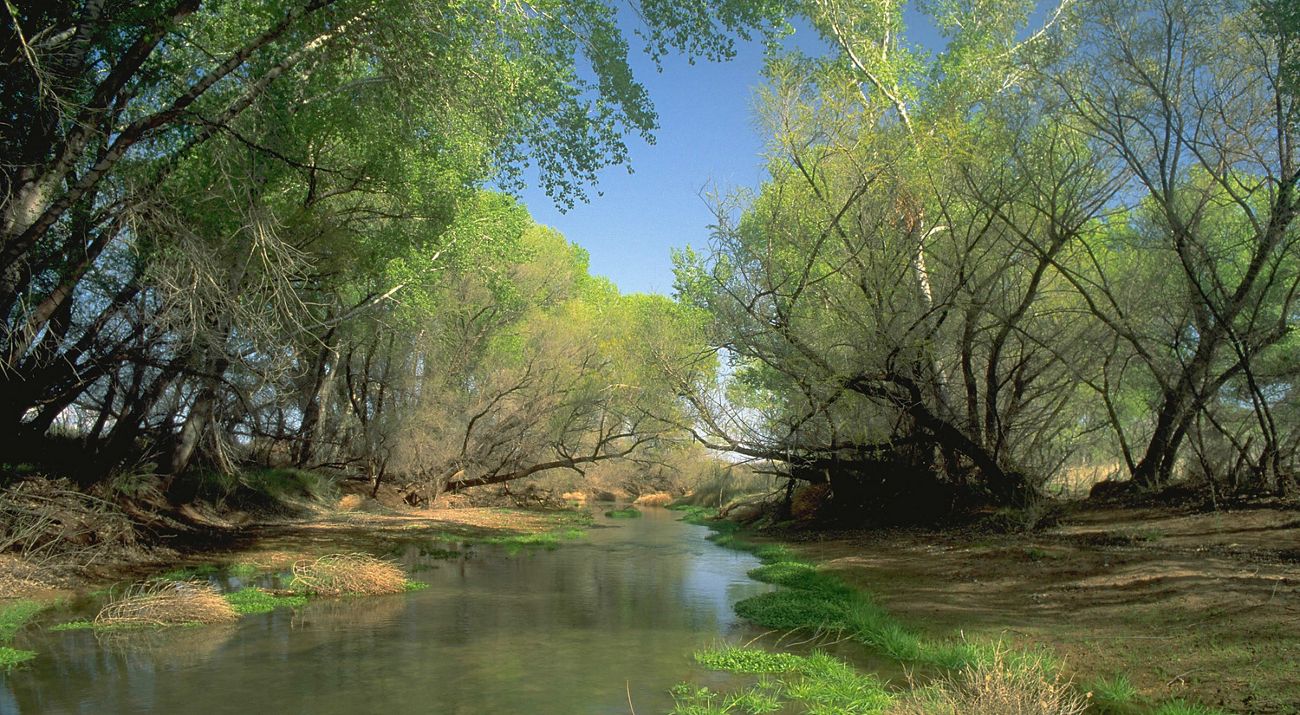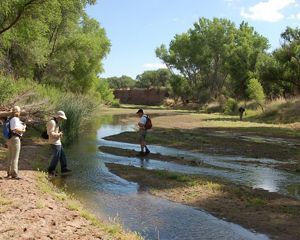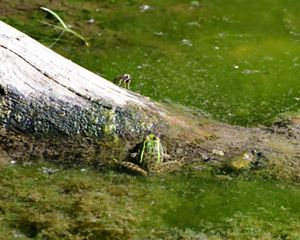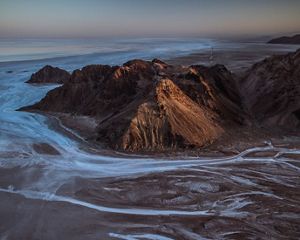Description
The San Pedro River's cottonwood-shaded corridor provides critical stopover habitat for millions of migrating birds each year. It is one of only two major rivers that flow north out of Mexico into the United States and is one of the last large undammed rivers in the Southwest.
The San Pedro River basin supports an astonishing variety of life—species typical of both the Chihuahuan and Sonoran deserts, as well as those that come north from the Sierra Madre in Mexico and south from the Rocky Mountains. Species such as the jaguar and black bear stalk the region’s forested mountains, while the tropical gray hawk and yellow-billed cuckoo nest along the verdant river. The basin is home to 84 species of mammals, 14 species of fish, and 41 species of reptiles and amphibians and provides a migratory flyway of hemispheric importance for neotropical birds.
WHY TNC IS WORKING HERE
Like much of the arid west, human water demands continue to increase along the San Pedro River, as a prolonged “megadrought” results in reduced water supplies for both people and nature. The Nature Conservancy (TNC) has been working with water managers, scientists and conservation partners to further strategic water management and freshwater restoration that build resilience for the river system, as well as the communities and wildlife that depend on it.
In addition, the Lower San Pedro Basin contains one of the largest unfragmented landscapes within Arizona, second only to the Grand Canyon. TNC is working to ensure that the most important corridors for wildlife movement remain intact and to improve the quality of habitats in key areas, including TNC’s Muleshoe Ranch Preserve and Aravaipa Canyon Preserve. Private lands that make up part of a protected 10-mile-long wildlife corridor linking the Galiuro Mountains to the Rincon and Catalina Mountains have also been permanently protected through conservation easements.
WHAT TNC IS DOING
- Over the past three decades, TNC has protected key lands and freshwater ecosystems across the San Pedro watershed, sustaining the health and function of some of the most intact and biologically rich habitats across the region. Some of these places, like the Ramsey Canyon Preserve near Sierra Vista, offer exceptional hiking and bird-watching opportunities. Others do not offer public visitation opportunities but are instead protected as part of private lands.
- Some streams in the Lower San Pedro River watershed are so healthy they have been the site of massive fish reintroduction efforts. At Muleshoe Ranch Cooperative Management Area, healthy populations of native loach minnow, desert pupfish and spike dace are thriving.
- At TNC’s Middle San Pedro River Preserve, a 90% reduction in agricultural water use over the historic water uses is helping the river: cottonwood seedlings dot the riverbed and shores, indicating that natural flows are intact and the river is doing well. Research has begun there to learn how land management practices can improve the quality of streamside mesquite forests while also maintaining shallow groundwater that supports river flows.
- Since 1999, TNC has recruited hundreds of volunteer “citizen scientists” to help to map the flows of the San Pedro in both the U.S. and Mexico during the hottest, driest time of year. The results of the mapping, conducted during June of each year, allow water managers and conservation partners to monitor flow patterns and adapt strategies to help restore river flows and sustain ecosystems.



